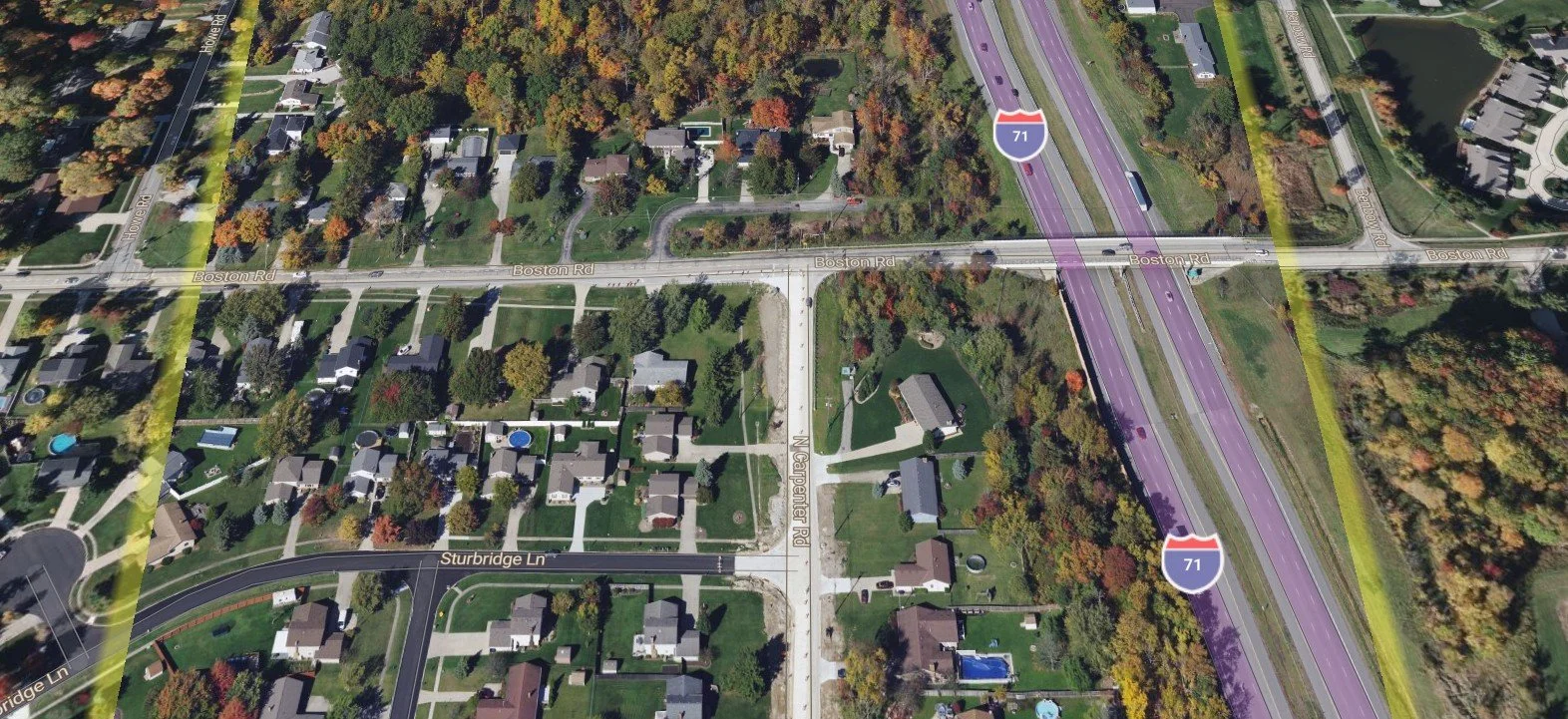Connect the Dots: What Google Maps Reveals About Dangerous Streets
Tell me where the next freeway will be without telling me where the next freeway will be.
Strong Towns is hosting another Crash Analysis Studio for a location in Ottawa. To be more specific, the studio will focus on a crash that occurred on the Ottawa University campus at the intersection of King Edward Avenue and Somerset Street, where two pedestrians were hit by a car while crossing the street. This is another tragedy where one life was lost and three lives will be forever impacted.
Sign up here to attend a Crash Analysis Studio session.
If you are using Google Maps, it might be difficult to find the specific location of this intersection because there are different labels for the streets in this vicinity. Google Maps uses Ottawa Regional Rd 99 when you are panned out, whereas King Edward Avenue is only evident when you zoom in to the block or street view. This labeling seems peculiar when you look at the conditions on the ground. This appears to be an urban intersection of two local streets, and not the highway as reported by Google Maps.
Ottawa Regional Rd 99 is a name you would assign to a highway, which has very different characteristics from a street. A highway classification alludes to high speeds, wide lanes, and limited access. Highways are generally wide, with the buildings set back from the road. They prioritize the car above all else and are the last place we would expect to see pedestrians. Highways take on a character more similar to the Trans-Canada Highway, which is very different from a two-lane urban street here.
Initially, I did not understand why Google Maps would be so confused. Google has virtually unlimited access to collect data source points, track drivers, and what we can only assume is underlying AI technology to provide a pretty accurate transportation picture. Google Maps shares this information and knowledge to guide drivers on the most direct routes to their destinations. Was Google Maps wrong?
I began to review the maps to understand what Google saw that I initially did not. I began to connect the dots, and the aspirations of a highway emerged. It helped me to see what was going on by changing the Google key for highways from yellow to red. I also found another street that was not yellow but has all the characteristics of a highway, which I added to the key.
We can now understand what is really going on. King Edward Avenue is the missing link in the highway system and, as a result, this becomes a hybrid street type. Despite the character and context of this street, the engineering for the majority of it is that of a highway. The two blocks between Somerset and Laurier Avenue, King Avenue, is a two-lane urban street, which is consistent with the character of a downtown or urban university campus, but contrasts the character of this road through the rest of the city.
South of Somerset, the transportation engineers are slowly introducing the highway into the city. The design engineers are attempting to transform King Edward Avenue into a highway. The first two blocks south include many design elements that are closer to a highway than an urban street, such as wide lanes that appear wider due to unmarked on-street parking, dedicated turn lanes with long stacking queues, and removal of cross streets and driveways. Continuing south of Mann Avenue, the full vision becomes evident, with smooth curves making the final connection to the Trans-Canada Highway. The result is 1.2 kilometers, or three-fourths of a mile, of highway ramps penetrating into the urban fabric of the city.
These queues are far less subtle to the north. The six lanes of the Macdonald-Cartier Bridge snake around a city block and along the bank of the Rideau River to align with King Edward Avenue. These six lanes penetrate into the city from the north 11 blocks, where one lane is omitted at Rideau Street. This portion of King Edward Avenue is a classic stroad where all the functions of a street and road are implemented poorly.
The two blocks of King Avenue between Somerset and Laurier Avenue appear to be holding the line against the stroad and highway expansion through the city. These blocks represent a street that accommodates all its users and is identical to the other 11 parallel streets in the city, yet it is under threat of becoming a connecting point for fast-moving highway traffic.
One block west of King Edward Avenue is Nicholas Street. Nicholas Street is a street in name only because it has all the characteristics of a limited-access highway: a posted 60-kilometer-per-hour (37-mph) speed limit, no cross streets or intersections, metal and concrete barriers, and no sidewalks. This Robert Moses-inspired highway is located along the banks of the beautiful Rideau Canal and park. Nicholas Street bypasses the downtown fabric and sacrifices the park.
Ottawa is composed of a network of streets historically interrupted by waterways. Today, the highways penetrate through the city and interrupt these historic grids. Ottawa is just another one of the countless cities where highway expansion is penetrating into the historic urban fabric of the city. These highways come at a huge cost to our communities, and as described in this Crash Analysis Studio, the ultimate sacrifice has been made, as a result.











For decades, state and federal highway agencies have justified massive projects with traffic forecast models. But a closer look reveals a troubling pattern of exaggeration, manipulation and outright falsification in these models.